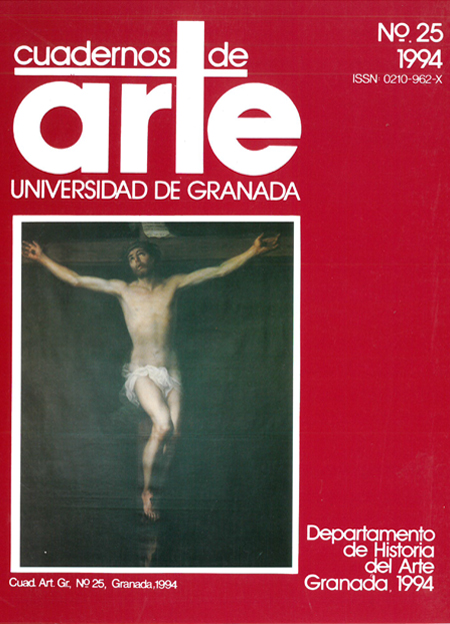Reflexiones sobre la jerarquía socio-cultural del arte contemporáneo
Resumen
La proyección y recepción diversificada del arte contemporáneo en cuanto lenguaje visual se convierte en un medio idóneo de incalculable valor en la política cultural de los poderes dominantes en el seno de la sociedad contemporánea. El análisis de la naturaleza estética en su dialéctica de singularidad y populismo, irreproductibilidad y medios de masas o en su carácter dirigido o independiente, son hechos que ofrecen un especial interés en la investigación sobre arte y poder. Los nuevos medios artísticos, los más recientes lenguajes, así como la especificidad del discurso estético, son elementos a estudiar en la jerarquía visual-artística que nos impone el mundo de imágenes en el que vivimos. Conceptos como los del neocapitalismo, época neobarroca, kitsch, las pretensiones político-sociales de los grandes acontecimientos artísticos -magnas exposiciones retrospectivaso el análisis de si la relación arte-poder en el contexto actual es un hecho nuevo o repite planteamientos históricos, todos ellos son puntos a tratar y tener en cuenta en el análisis reflexivo del arte contemporáneo.Descargas
Descargas
Publicado
1994-11-10
Cómo citar
Rubio Lapaz, J. (1994). Reflexiones sobre la jerarquía socio-cultural del arte contemporáneo. Cuadernos De Arte De La Universidad De Granada, 25, 97–106. Recuperado a partir de https://revistaseug.ugr.es/index.php/caug/article/view/10862
Número
Sección
Estudios
Licencia
Los autores que publican en esta revista están de acuerdo con los siguientes términos:- Los autores conservan los derechos de autor y garantizan a la revista el derecho de ser la primera publicación del trabajo al igual que ser licenciado bajo una licencia Creative Commons que permite a otros compartir el trabajo con un reconocimiento de la autoría del trabajo y la cita de la fuente original, con un uso no comercial y siempre que no se hagan obras derivadas.
- Los autores pueden establecer por separado acuerdos adicionales para la distribución no exclusiva de la versión de la obra publicada en la revista (por ejemplo, situarlo en un repositorio institucional o publicarlo en un libro), con un reconocimiento de su publicación inicial en esta revista.
- Se permite y se anima a los autores a difundir sus trabajos electrónicamente (por ejemplo, en repositorios institucionales o en su propio sitio web) antes y durante el proceso de envío, ya que puede dar lugar a intercambios productivos, así como a una citación más temprana y mayor de los trabajos publicados (Véase The Effect of Open Access) (en inglés).


 ISSN-e: 2445-4567
ISSN-e: 2445-4567








